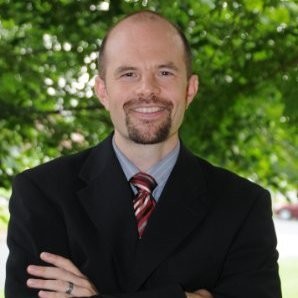enrollment
Small Liberal Arts Colleges: Punching Above Their Weight

This is a guest blog from Aaron Basko, vice president for enrollment management at the University of Lynchburg. Aaron is a higher education professional with more than 25 years of experience in enrollment management. He has written previously for RNL about best financial practices for universities and has also written for The Chronicle of Higher Education among other publications.
Everyone loves a David and Goliath story, and at this moment in the history of higher education, small colleges could use one. The news has not been good. A recent Forbes article noted that Fitch Ratings is predicting the inevitability of more college closings and mergers in the near feature: “The problem is most pronounced for small, nonselective private colleges and some regional public universities, according to Fitch, which noted that colleges enrolling fewer than 3,000 students saw the steepest average enrollment decline of 4.7 percent between 2015 and 2019.”
I think it is easy for lawmakers, the media, and even large sectors of higher education to dismiss small colleges. After all, individually, the may not look like much on paper. For example, what difference does a population of 1,500 students at one institution make in the grand scheme of higher ed? What is the real impact if a few small colleges close? Those students can always go to a larger institution.
This perspective, however, underestimates the role of small colleges in higher education—a role that has been a primary differentiator in the predominance of U.S. higher education in the world. The truth is, many of these small institutions “punch above their weight” and are making an outsized contribution to the higher education profession.
A case study for small liberal arts colleges

This really hit home for me earlier this year when I was invited to represent the university that I work for at the inauguration of a new president at my alma mater, West Virginia Wesleyan College. WVWC is a quintessential small liberal arts college with a population of 1,100 students and a beautiful campus nestled in the heart of central West Virginia. For an alum, there is nothing quite like hearing “My Home Among the Hills” (Wesleyan’s song) sung by a student choir in the classic chapel that stands in the middle of campus.
While I was on campus for the event, what struck me the most as I spoke with other alumni was how far WVWC’s roots have spread into the field of higher education. I noticed this first on the side of businesses-serving education in my work with Bill Fahrner, president of higher ed consultancy Credo; Chris Coons, associate vice president for business development at Carnegie; and Ryan Morabito, senior advisor at 5 Degrees Branding. These are all higher education professionals at the top of their game, and they all graduated from West Virginia Wesleyan around the same time that I did.
I mentioned these connections to John Waltz, vice president for enrollment management at WVWC (also an alum), and he took my observation further.
“The college doesn’t just have graduates on the business side of higher education. We also have a surprising number of practitioners, like Scott Miller, president at Virginia Wesleyan; Chris Wood, president of Davis and Elkins College; Liz Short, associate vice president for development at Bethany College; Danette Ifert Johnson, provost at Kalamazoo College; Robbie Quarles, dean of student affairs at South University; Kent Gamble, dean of enrollment services at WVU Tech; and Andrew Sulgit, chief government relations officer at Concord College. Those are the ones I can think of right away.”
That seems like pretty good representation to me for a college of 1,100 students. A five-minute search on LinkedIn also added senior leaders in higher education at Radford, American University, and Rosemont College. At the University of Lynchburg in Virginia, where I currently work as a vice president, our assistant vice president for development as well as our writing center director and chaplain are also both proud West Virginia Wesleyan alumni.
Dr. James Moore, WVWC’s president, doesn’t seem surprised by the high level of production of leaders. “I think what’s unique about a place like West Virginia Wesleyan College is that the level of faculty and staff engagement, coupled with our small size, encourage people to develop a deep understanding of the machinationsof our institution. There’s a strong cultureof service and involvementhere, and senior facultyand staff model a sense of being plugged in. So, I think it’s natural that leaders would be developed in such an environment.”
That is one small college making an oversized contribution to the field of higher education. Imagine how much poorer our industry would be without just this one institution that apparently knows how to inspire a love of education. I don’t know how many other small colleges are out there who are sending so many people into higher ed, but I’m guessing West Virginia Wesleyan is not alone.
How is it possible that a small college would contribute so many professionals to the field of higher education?
Outsized influence
Overproduction of leaders in higher education would not be the only place that small colleges punch above their weight. According to LiberalArtsColleges.com, while only 4 percent of American students graduate from these types of institutions, their graduates represent 9 percent of Fortune 500 CEO’s, 14 percent of tenured Harvard law professors, 23 percent of U.S. educated Nobel Laureates, and 27 percent of U.S. presidents. David may only have a slingshot, but his aim is pretty good.
One of the places where this over-representation is especially notable is in the member institutions of The Colleges That Change Lives (CTCL) organization. The group takes its name from the best-selling book by Loren Pope, which was first published in 1996. The book highlighted 40 colleges across the U.S. that Pope felt would have a larger impact on their students than the big brand name institutions because of their approach to engaged student learning.
As CollegeVine writer Elizabeth Suneby describes it, “Pope’s goal was to promote a student-centered college search and change the way people evaluate colleges—challenging conventional wisdom. He dismissed the importance of college rankings based on test scores and alumni-giving as valid indicators of quality.”
CTCL membership currently includes 44 schools that are well respected by those who know higher education but aren’t exactly household names—like Denison College (OH), Beloit College (WI), Goucher College (MD), Rhodes College (TN), Eckerd College (FL), Kalamazoo College (MI), the University of Lynchburg (VA), and the University of Puget Sound (WA).
Ann Marano, executive director of CTCL, is not surprised to find many of its graduates in higher education leadership.
“Our 44 member institutions excel at preparing students for careers in higher education because the undergraduate experience is housed within the tradition of the liberal arts and sciences and prioritizes experiential learning. Dynamic classroom discussions, the lively exchange of ideas, exploring and learning from the connections between people, subject areas and perspectives, critical thinking, and the practical application of the theoretical is the norm.”
Marano adds that the connection seems particularly strong in the enrollment management field, noting that over a dozen of the enrollment managers at CTCL schools are CTCL graduates, and nearly three-quarters of them are products of small liberal arts colleges that focus on a high degree of student engagement.
“CTCL students are engaged in problem solving, working collaboratively, and searching for creative solutions to the questions and concerns that matter to them and their communities. Faculty and staff are committed to teaching, guiding, coaching, and mentoring students; to guiding them to finding their “reasons why” and identifying their superpowers. All of this means that CTCL member institution graduates enter the market with the broad knowledge, growth mindsets, and interpersonal skills highly prized by people-focused professions like education.”
Ready for the job
In my 26 years in higher education, I have seen a dynamic in hiring that for me helps to explain why there are so many higher education leaders with small college backgrounds. At several different institutions, I have seen professionals be hired primarily because their degree or working experience was from a higher-ranking institution—a sort of aspirational hiring. In almost all of these cases, the person was a flop and did not last long in the position. They were then replaced by someone with better experience from a much more modestly ranked (and usually smaller) institution, who then was able to achieve truly remarkable results. What happened?
In my analysis, the individuals from the highly ranked institution were used to having every possible resource available to them. They were accustomed to having doors open for them because of the pedigree name. When they then had to operate in an environment of increased scarcity and one which required crossing over lines of specialization, they weren’t able to adapt.
In contrast, those coming from the lower ranked institutions were used to doing much with little. They showed a much higher ability to innovate and adjust to a different culture. They read people better, and they were more able to manage how they came across to others. And they knew how to bring people together to get things done instead of making everyone adapt to their way of doing things.
Obviously, this is not universal, but I have seen it enough to rely on it as a predictable pattern. For me, this second set of abilities is what makes small school graduates successful in many areas of higher education. If we look at the industry as a whole, easily 80 percent of institutions would describe themselves as always trying to do more with less, having to adapt quickly to ever-changing circumstances, and struggling to get diverse groups of people to work together to solve complex problems.
It would be hard to created a better poster advertising the benefits of a small liberal arts environment than that. These institutions focus on small classes, high levels of discussion, exposure to a wide range of fields and diverse viewpoints, advanced communications skills, persuasive speaking and writing, and faculty-student mentoring. Far from being old-fashioned, traditionalist techniques, these approaches are a particularly good approach for the modern work environment, particularly in people-intensive enterprises like higher education.
It was a treat for me to spend time on the campus of my alma mater this fall, and to be a part of a moment that celebrated the continuation of a type of education that I believe in. West Virginia Wesleyan’s name hasn’t opened a lot of doors for me by itself (unless there are WVWC grads already inside), but with every door I have walked through, I found I had the skills I needed to both survive and thrive, no matter what the environment. I have worked at public and private institutions, of varying sizes, and with different missions, but at all of these, I felt like I knew how to handle myself professionally and how to build the kinds of relationships that would make me, and the institution, successful. I don’t need Goliath’s armor or his size, I’ll take the sling and stones.